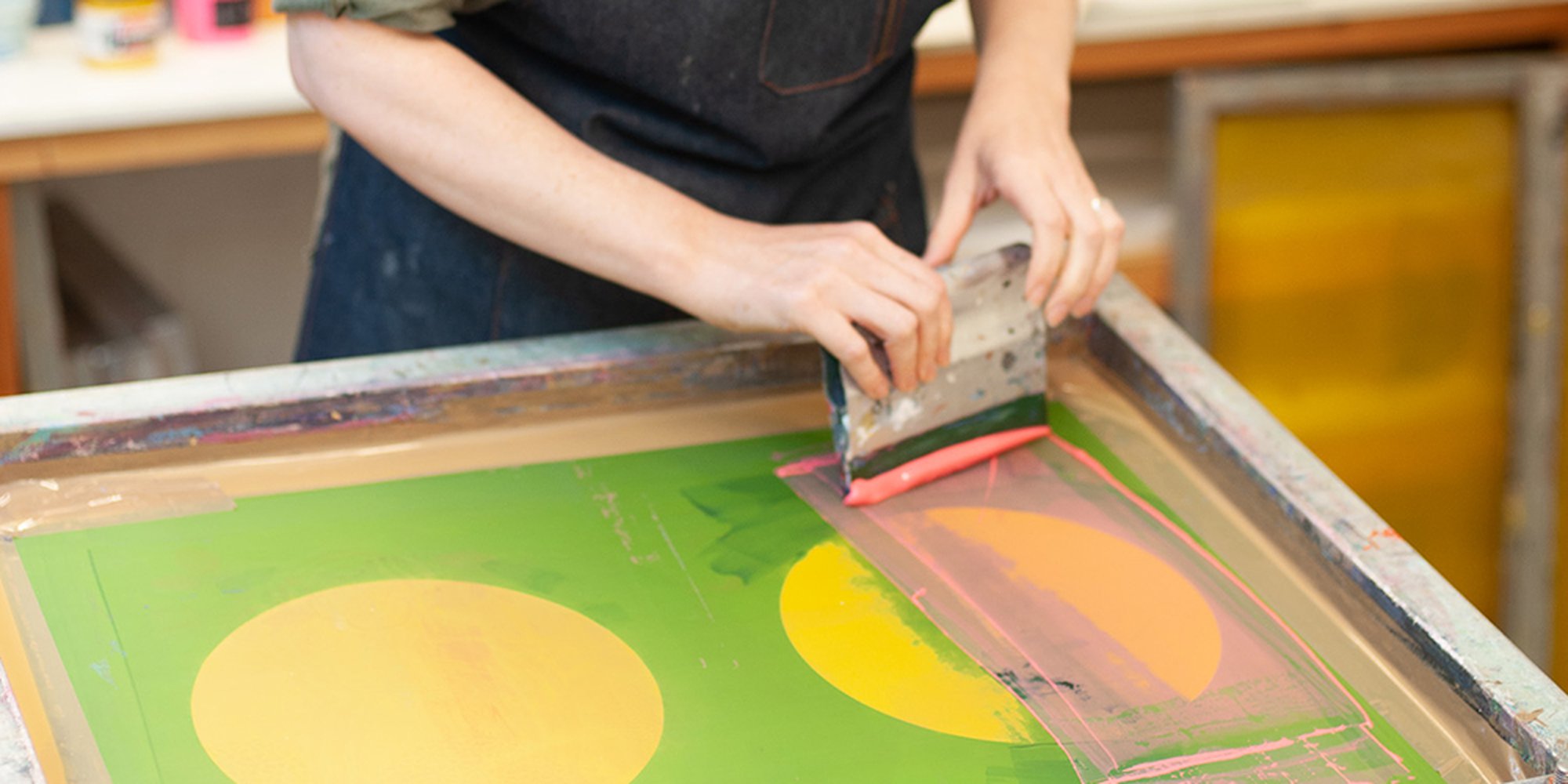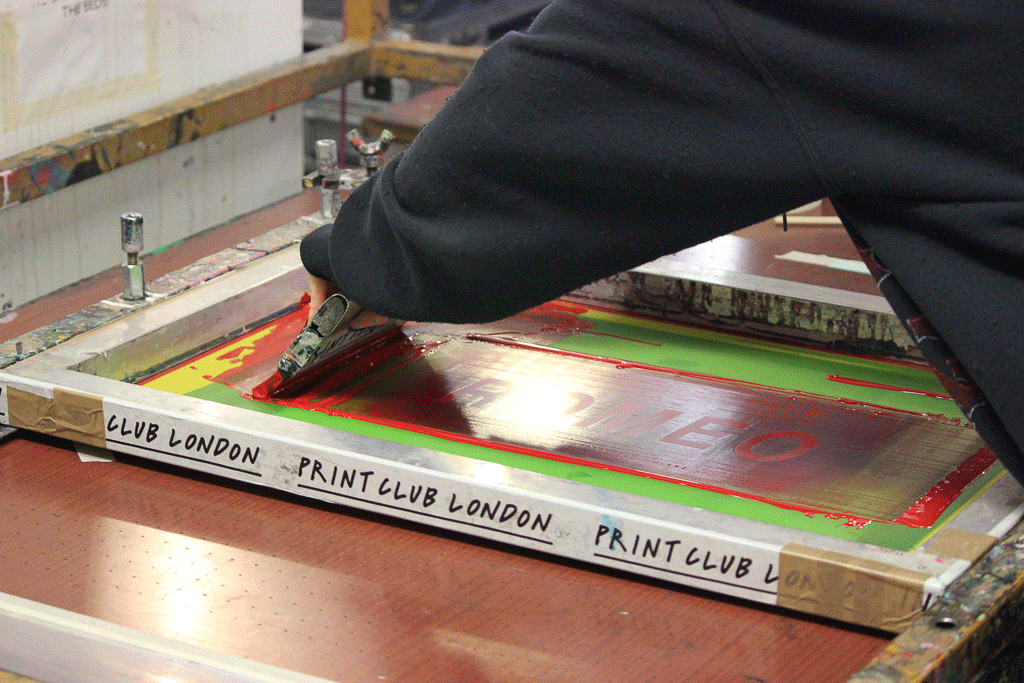Discover the Numerous Types of Screen Printing Techniques for Your Next Task
Screen printing provides a varied series of strategies that can boost any type of innovative project. From conventional techniques like serigraphy to contemporary innovations such as direct-to-garment printing, each strategy has its unique advantages. Specialized alternatives, consisting of metallic and eco-friendly inks, introduce much more opportunities. Understanding these methods can greatly impact the last result. The challenge lies in choosing the most appropriate approach for certain demands and desired effects. What factors should one take into consideration?

The Essentials of Screen Printing
Although screen printing might appear complex, it is basically a simple procedure that entails transferring ink via a mesh screen onto various surface areas. The method begins with the development of a stencil, which specifies the design to be published. This pattern is connected to a mesh screen, normally constructed from polyester or nylon. As soon as the stencil remains in area, ink is used to the screen and pressed via the mesh using a squeegee, causing the wanted pattern being printed on the underlying product.
Screen printing can be done on a large range of substratums, consisting of paper, material, and plastic, making it a functional option for different jobs. The process allows for complex layouts and vivid shades, making it preferred in industries such as advertising and marketing, fashion, and art. Comprehending these basics furnishes people with the fundamental knowledge called for to discover advanced strategies in screen printing.
Conventional Screen Printing Techniques
Standard screen printing strategies have actually been utilized for centuries, maintaining the workmanship and creativity of this approach. This approach utilizes a mesh screen to move ink onto a substrate, such as fabric or paper, permitting durable and dynamic designs. The process starts with producing a stencil, which obstructs specific locations of the screen to manage where the ink will certainly be used.
One prominent technique is serigraphy, typically used for minimal versions and creative prints. One more is the use of water-based inks, which are eco-friendly and supply a soft feeling on fabrics - 10:9 Design Screen Printing. Furthermore, traditional approaches can include manual printing, where artisans apply ink with a squeegee, making certain precision and focus to information
These strategies stay valued in the sector for their tactile quality and the special appearances they produce, interesting both consumers and creators who value the heritage of screen printing.
Digital Screen Printing Innovations
As the demand for faster production and modification in the printing sector has actually risen, digital screen printing technologies have become a game-changer. This technology mixes standard screen printing techniques with electronic processes, permitting fast prototyping and complex designs that were formerly hard to accomplish. One considerable improvement is the intro of direct-to-garment (DTG) printing, which promotes top notch, full-color prints on numerous fabrics without the demand for screens. Additionally, innovations in ink formulas have actually led to environment-friendly options that maintain dynamic shades while lessening environmental influence. Using automated systems even more simplifies manufacturing, decreasing labor expenses and boosting accuracy. These innovations not only cater to small batch orders and tailored styles but likewise permit quicker turnaround times, making them perfect for organizations focused on conference consumer demands in a fast-paced market. Digital screen printing, as a result, represents an essential development in the domain name of printing strategies.
Specialty Screen Printing Methods
Exploring specialized screen printing methods reveals a diverse array of strategies that press the borders of creativity and performance in the printing sector. Among these, glow-in-the-dark inks offer an unique visual effect, making designs come alive in low-light problems. Metallic inks, recognized for their shimmering coating, include a touch of deluxe to published materials. One more cutting-edge technique is discharge printing, which removes dye from the material rather of adding ink, resulting in a soft, vintage feeling. High-density printing develops an increased texture on the surface, enhancing responsive involvement. In addition, water-based inks are acquiring appeal for their vibrant shades and minimized environmental influence. Each of these specialty strategies deals with particular style requirements, making it possible for artists and brands to develop standout items that reverberate with here their audiences. By leveraging these approaches, services can elevate their screen printing jobs to brand-new elevations, making certain remarkable impacts.
Eco-Friendly Screen Printing Options
Environment-friendly screen printing choices are obtaining grip as the market changes in the direction of sustainability. Lasting ink options and using eco-friendly materials are key elements in lowering the ecological effect of the printing process. By taking on these practices, screen printers can add to a more sustainable future while maintaining high-grade results.
Sustainable Ink Choices

Biodegradable Products Usage
As the screen printing market progresses, the incorporation of biodegradable materials is coming to be progressively important for eco conscious techniques. Designers and producers are now exploring inks and substratums made from natural, renewable energies that break down more efficiently than conventional equivalents. These naturally degradable options minimize plastic waste and lessen ecological influence, aligning with the expanding need for sustainable items.
Usual instances consist of water-based inks and organic cotton materials, both of which reduce damaging chemicals and advertise eco-friendliness. Brand names that take on these products frequently improve their market charm, bring in consumers that prioritize sustainability. As awareness of environmental issues remains to increase, the change towards eco-friendly products in screen printing is most likely to gain momentum, fostering a greener sector criterion.
Picking the Right Technique for Your Project
How can one determine one of the most suitable screen printing strategy for a certain task? The choice depends upon several elements, including the material to be published on, the intricacy of the design, and the wanted manufacturing quantity - 10:9 Design Texas. For instance, direct-to-garment printing is optimal for elaborate styles with numerous shades, while standard screen printing excels for larger runs of easier graphics
In addition, factor to consider of the end-use of the published item is vital. For outdoor applications, techniques that supply sturdiness and climate resistance, such as plastisol ink, might be favored. Conversely, environmentally-conscious jobs might profit from biodegradable materials or water-based inks.
Eventually, understanding the project's special requirements enables for an informed selection, ensuring both visual allure and useful durability. By examining style intricacy, material compatibility, and manufacturing range, one can properly select one of the most proper screen printing technique to fulfill their project's goals.
Often Asked Questions
What Is the History of Screen Printing?
Screen printing came from old China around 1000 ADVERTISEMENT, evolving through Japan and Europe. By the 20th century, it ended up being prominent in business art and style, revolutionizing exactly how layouts were created and distributed globally.

Just how Do I Prepare Art Work for Screen Printing?
To prepare art work for screen printing, one must guarantee high resolution, use an ideal shade mode, create separate layers for each and every shade, and convert message to describes, guaranteeing compatibility with the printing procedure and wanted end result.
What Products Are Ideal for Screen Printing?
The most effective products for screen printing consist of high-quality inks, resilient displays, and appropriate substratums like cotton, polyester, or blends. Additionally, using appropriate solution and mops can boost the printing procedure and results.
Can I Evaluate Publish in the house?
Yes, screen printing in the house is possible. With the ideal materials, configuration, and methods, people can create premium prints. Careful factor to consider of office and devices is essential for effective results.
What Are Typical Errors in Screen Printing?
Usual blunders in screen printing include incorrect direct exposure times, insufficient ink uniformity, imbalance of displays, insufficient cleaning of products, and neglecting to evaluate prints. These errors can compromise the quality and accuracy of the end product.
Screen printing might appear complex, it is basically a straightforward process that entails moving ink with a mesh screen onto various surfaces. As the need for faster manufacturing and personalization in the printing industry has actually risen, digital screen printing developments have actually arised as a game-changer. Checking out specialty screen printing techniques discloses a diverse selection of strategies that press the borders of creativity and capability in the printing industry. The best materials for screen printing include top quality inks, resilient screens, and suitable substratums like cotton, polyester, or blends (10:9 Design reviews). Usual blunders in screen printing consist of inappropriate direct exposure times, poor ink uniformity, imbalance of screens, not enough cleansing of products, and neglecting to check prints